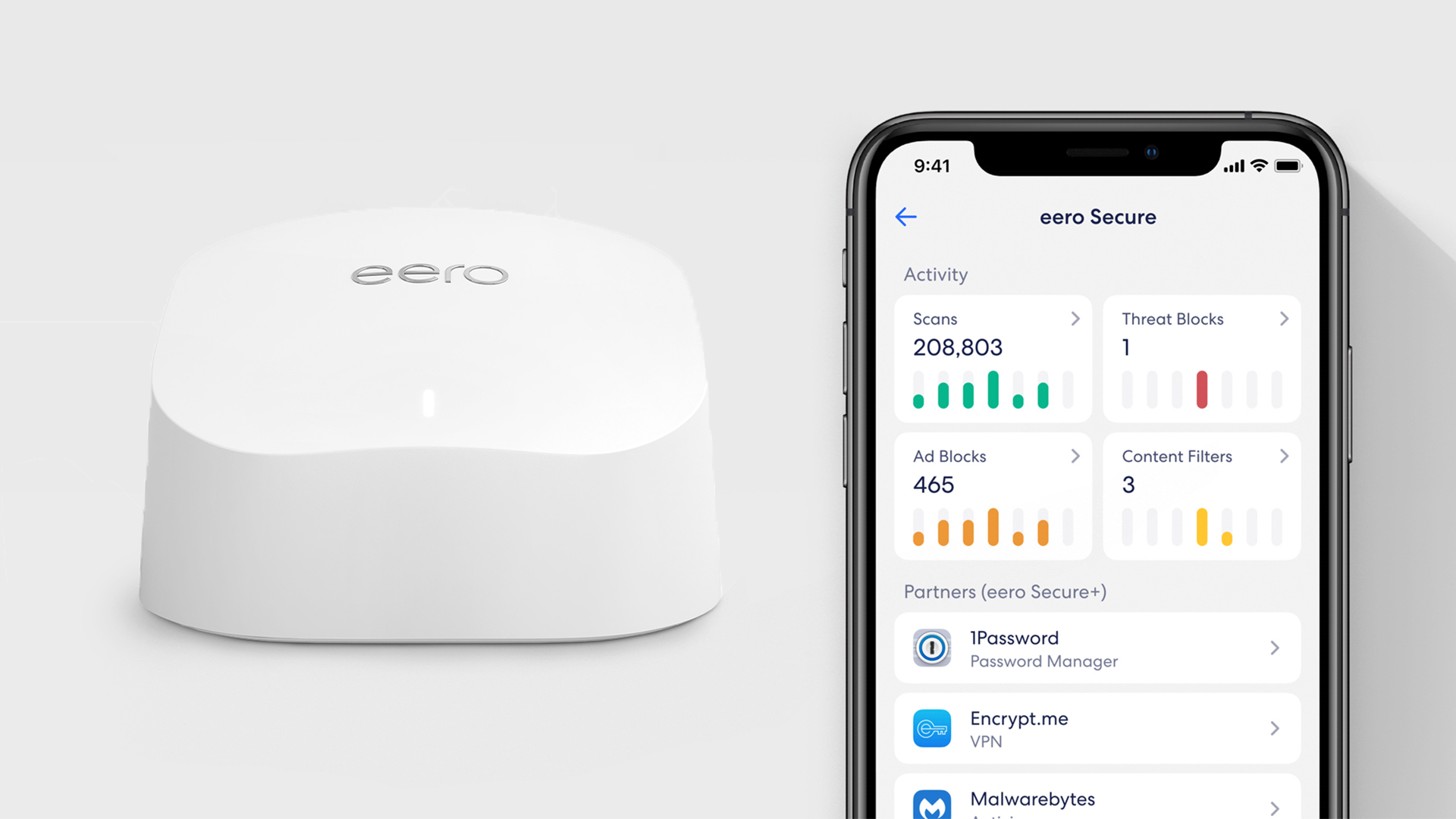Amazon's new Eero 6 and Eero 6 Pro mesh routers are built for home working and smart control
New Eero 6 mesh Wi-Fi systems are faster than ever, and have a Zigbee smart home control hub built in


Along with its new Echo devices and cheap Amazon Fire TV Stick, Amazon has launched a new version of the Eero mesh Wi-Fi router system, which has been upgraded to include Wi-Fi 6 for the first time.
Wi-Fi 6 is the latest and greatest version of the Wi-Fi standard, and is also known as 802.11ax – but that was re-branded to Wi-Fi 6 when the Wi-Fi bosses decided to make the names a little less opaque.
The new Eero 6 and Eero Pro 6 models both include the faster speeds of the Wi-Fi version they're named for, though as with all Wi-Fi tech, they're fully compatible with phones, laptops and so on that use an older Wi-Fi version.
• Save £100 current Eero models with Amazon Prime Day!
• Best mesh Wi-Fi systems – more great home Wi-Fi upgrades
• Best Wi-Fi extenders – other options for getting better coverage
Amazon says that the non-pro Eero 6 is designed for houses with internet speeds of up to 500Mbps, which would be… well, pretty much all of them. An individual Eero 6 unit can cover up to 1,500 square feet with signal, though that will vary depending on factors like how thick your walls are. Add a second Eero 6 module and you can cover 3,000 sq ft, and a three-pack promises 5,000 sq ft of blanketed Wi-Fi.
The Eero 6 is a dual-band mesh system, with two ethernet ports per unit.
The Eero Pro 6 is designed for premises with up to 1Gbps internet, which is really more likely in businesses. A single unit can cover 2,000 sq ft, or two will hit 3,500 with two units, or 6,000 with three. The Eero Pro 6 is a tri-band mesh system, again with two ethernet ports per module.
Get all the latest news, reviews, deals and buying guides on gorgeous tech, home and active products from the T3 experts
All of the new Eero models have Zigbee smart home hubs built in, which is a type of wireless communication used by lots of devices as a longer-range, lower-power alternative to Wi-Fi and Bluetooth. Devices such as Philips Hue and Samsung SmartThings products use Zigbee, and having a hub built into the Eero means you don't need a separate hub from these brands in order to control their products – it's a good way to save money, and to have fewer boxes around the house.
Previous Eero routers have also included Apple HomeKit support, which provides extra security to any smart home devices that work with Apple's system, but there's no mention of it in the Eero 6 so far – we'll update you if that changes.
And given that it's from Amazon, it's no surprise that you can control these devices with Alexa, asking the assistant to do things like turn on a guest network so people can connect to your Wi-Fi without you giving them the password.
One of the nice touches of the new Eero devices is that they're backwards compatible with existing Eero systems, so you could add a single Eero 6 module and get its benefits without having to replace your whole current setup.
We're currently waiting for confirmation on worldwide release dates and prices, but you can pre-order the Eero 6 now in the US for delivery on the November 2nd release date. A single Eero 6 unit costs $129, or $199 for a two-pack, and $279 for a three-pack.
Eero Pro 6 costs $229 for a single unit, $399 for two, or $599 for three.
- Best Amazon Prime Day deals
- Black Friday deals 2020 – everything you need to know
- Cyber Monday 2020
- Best Christmas gifts – grab great presents before the rush

Matt is T3's former AV and Smart Home Editor (UK), master of all things audiovisual, overseeing our TV, speakers and headphones coverage. He also covered smart home products and large appliances, as well as our toys and games articles. He's can explain both what Dolby Vision IQ is and why the Lego you're building doesn't fit together the way the instructions say, so is truly invaluable. Matt has worked for tech publications for over 10 years, in print and online, including running T3's print magazine and launching its most recent redesign. He's also contributed to a huge number of tech and gaming titles over the years. Say hello if you see him roaming the halls at CES, IFA or Toy Fair. Matt now works for our sister title TechRadar.